If you have a passion for fashion and dream of a career in the industry, you’re in the right place. The fashion world is dynamic, competitive, and endlessly exciting. Whether you aspire to be a fashion designer, stylist, buyer, or entrepreneur, breaking into the fashion industry requires a combination of talent, knowledge, and determination.
But fear not! This comprehensive guide will provide you with the essential tips and insider insights to help you navigate the fashion landscape and carve out a successful career path. From understanding industry trends and honing your skills to building a compelling brand identity and securing opportunities, we’ve got you covered.
So, if you’re ready to dive into the glamorous yet challenging world of fashion, let’s get started on your journey to success.
Key Takeaways:
- Understanding the fashion industry requires a blend of creativity, business acumen, and industry awareness.
- Education and skill development are crucial for honing your craft and staying ahead in the industry.
- Building a strong brand identity and creating a standout portfolio are essential for attracting opportunities.
- Networking and securing practical experience are key steps toward advancing your fashion career.
- Adapting to industry trends, staying informed, and maintaining a sustainable mindset are vital for long-term success.
Understanding the Fashion Landscape
To succeed in the fashion industry, it is important to understand the classic styles and their history, as well as the current trends and influences. By immersing yourself in the fashion landscape, you gain valuable insights that can guide your design decisions and set you apart from the competition.
One key aspect of understanding the fashion landscape is observing consumer behavior. Fashion is driven by consumer demand, and staying attuned to the preferences and needs of your target audience is essential. By studying consumer behavior, you can identify emerging trends and adapt your designs accordingly, ensuring that your creations resonate with your customers.
“Fashion is not something that exists in dresses only. Fashion is in the sky, in the street; fashion has to do with ideas, the way we live, what is happening.” – Coco Chanel
In addition to consumer behavior, the impact of social media on the fashion industry cannot be ignored. Platforms like Instagram and TikTok have transformed the way fashion is consumed and shared. Fashion influencers and bloggers play a significant role in shaping trends and influencing purchasing decisions. By following these influencers and monitoring the conversations happening on social media, you can stay updated on the latest fashion industry trends.
Economic variables also influence the fashion landscape. Understanding the economic factors that drive the industry, such as GDP growth, consumer spending patterns, and market conditions, is crucial for making informed business decisions. By analyzing and interpreting these economic indicators, you can anticipate changes in fashion trends and adjust your strategies accordingly.
Connecting with industry insiders is another valuable way to gain insights into the fashion landscape. Attending fashion-centric events, such as fashion weeks and trade shows, allows you to interact with industry leaders, designers, and influencers. These events provide a platform for networking and learning from the best in the field. Additionally, participating in fashion forums and online communities enables you to engage in discussions about industry trends, analysis, and innovative practices.
Current Fashion Industry Trends
Keeping up with the latest fashion industry trends is essential for staying relevant and competitive. Here are some of the key trends shaping the industry:
- The rise of sustainable fashion: With increasing awareness about environmental issues, consumers are demanding eco-friendly and ethically sourced fashion products. Brands that prioritize sustainability are gaining popularity and making a positive impact on the industry.
- Embracing diversity and inclusivity: The fashion industry is becoming more representative of diverse body types, ethnicities, and genders. Brands that celebrate inclusivity and showcase diverse models in their campaigns are receiving recognition and praise.
- Technological advancements: From virtual fashion shows to digital design tools, technology is revolutionizing the fashion industry. Augmented reality (AR) and virtual reality (VR) are being used to enhance the shopping experience, while 3D printing is transforming production processes.
- Gender-neutral fashion: Traditional gender norms in fashion are being challenged, with more designers and brands introducing gender-neutral collections. This trend reflects a shift towards fluidity and inclusivity in the industry.
To stay ahead in the fashion industry, it is essential to understand the current trends and adapt them to your own unique style and brand identity. By staying informed and embracing the evolving fashion landscape, you can position yourself for success in this dynamic industry.
| Trends | Key Features |
|---|---|
| Sustainable fashion | Eco-friendly materials, ethical sourcing, circular fashion |
| Diversity and inclusivity | Representation of diverse body types, ethnicities, and genders |
| Technological advancements | Virtual fashion shows, digital design tools, 3D printing |
| Gender-neutral fashion | Blurring traditional gender norms and creating unisex collections |
Education and Skill Development
Building a successful career in the fashion industry requires a strong foundation in the basics of fashion design. Whether through formal education or self-guided learning, continuously improving your fashion design skills is crucial to staying competitive in this ever-evolving field.
Acquiring a degree from a reputable fashion institute can provide you with valuable theoretical knowledge and hands-on experience. Programs in fashion education offer comprehensive curricula that cover essential areas such as pattern making, draping, and color theory. These foundational skills form the backbone of your design repertoire and enable you to bring your creative visions to life with precision and finesse.
You can also enhance your fashion design skills through self-teaching and personal experimentation. The fashion industry is known for nurturing independent and innovative designers who have honed their craft through self-paced learning. Experimenting with different techniques, exploring unconventional materials, and pushing the boundaries of fashion design can help you develop a distinct style and establish your unique voice in the industry.
Staying on top of the latest tools, software, and fabrication techniques is crucial in an industry that values innovation. Embracing technology and incorporating it into your design process enables you to streamline your work, explore new design possibilities, and stay relevant in a competitive market. Keeping yourself updated on emerging trends and the latest industry advancements ensures that your skills remain fresh and adaptable.
“Fashion design is not just about talent; it’s about continuous learning and growth. Education and skill development are fundamental in elevating your career and unlocking your full potential as a fashion designer.” – Sarah Simmons, Fashion Designer
Key Fashion Design Skills
| Technical Skills | Creative Skills |
|---|---|
|
|
Mastering these key skills empowers you to express your creative vision effectively and execute your design ideas with precision and excellence. Remember, fashion education and continuous skill development are the building blocks of a successful fashion career.
Building Your Brand Identity
In a saturated industry, creating an authentic brand identity that resonates with your target audience is key. Your fashion design philosophy and personal aesthetic preferences will serve as the guiding principles for your brand. Understanding the narratives you want to convey through your collections will help you create a cohesive and compelling brand story.
Design elements such as logos, typography, and color palettes should align with your brand’s core values and the emotions you want to evoke. Consistency in these design elements will enhance your brand recognition and differentiate you from competitors.
Developing a coherent brand strategy is crucial, ensuring that your identity is clearly and compellingly communicated across various mediums. This includes your website, social media platforms, packaging, and other touchpoints with your customers.
Creating a strong fashion brand identity requires aligning your personal design philosophy, aesthetic preferences, and storytelling abilities. It’s about crafting an identity that connects with your target audience on a deeper level, making your brand memorable and sought-after.
Incorporating Your Fashion Design Philosophy
Each fashion designer has a unique design philosophy that shapes their creative process and influences the finished pieces. Understanding and articulating your design philosophy is crucial in developing a brand identity that stands out in the fashion industry.
Your fashion design philosophy serves as the foundation for your brand identity. It encompasses your creative vision, values, and the story you want to tell through your designs.
Whether your design philosophy is centered around sustainability, minimalism, avant-garde aesthetics, or cultural heritage, it plays a significant role in shaping your brand identity. It creates a sense of purpose and authenticity that consumers can connect with.
Visual Elements and Brand Identity
Your visual branding elements contribute to the overall perception of your brand. Consistency in these elements helps customers recognize and relate to your brand more easily.
Logos, typography, and color palettes are crucial components of your visual identity. They should be carefully designed to reflect your brand’s essence and resonate with your target audience.
Your logo is a visual representation of your brand and should be memorable, versatile, and aligned with your brand’s core values. Typography choices should evoke the desired emotions and complement your brand identity. Color palettes play a crucial role in setting the tone and mood of your brand, evoking specific emotions in your target audience.
Captivating Your Target Audience
Understanding your target audience is essential in building a strong brand identity that resonates with potential customers. Researching their preferences, needs, and values will help you craft a brand identity that appeals to them.
Taking a customer-centric approach, you can tailor your brand’s messages, visuals, and tone of voice to captivate and engage your target audience. By aligning your brand identity with their aspirations and desires, you can build a loyal customer base.
Remember, building a strong brand identity takes time and consistent effort. Stay true to your design philosophy, adapt to customer feedback, and evolve alongside the ever-changing fashion industry trends.
Creating a Strong Portfolio
A strong portfolio is essential for showcasing your skills and style to potential employers, collaborators, and clients. It is your visual resume, an opportunity to demonstrate your versatility and unique talents. An impactful portfolio can open doors to exciting opportunities in the fashion industry.
To create an impressive fashion design portfolio, consider the following:
1. Show a Variety of Work
Include a diverse range of your best work to showcase your capabilities. Demonstrate your ability to work with different fabrics, styles, and techniques. Highlight projects that align with the specific niche or market you aspire to be a part of.
2. Showcase Your Unique Style
Your portfolio should reflect your personal aesthetic and design philosophy. Use this platform to tell a story about who you are as a designer. Present your signature style, whether it’s bold and avant-garde or minimal and elegant.
3. Embrace Digital Platforms
An online portfolio is essential in today’s digital age. Create a visually appealing and user-friendly website to showcase your work. Include high-quality images, descriptions of each piece, and any relevant details such as materials used or inspirations behind the design.
4. Leverage Social Media
Utilize social media platforms to promote your portfolio and connect with a wider audience. Share your designs on Instagram, Pinterest, or other fashion-oriented platforms. Engage with followers, industry influencers, and potential clients to increase your visibility and build a strong online presence.
5. Tailor Your Portfolio to Specific Opportunities
Consider customizing your portfolio for different opportunities. Research the company or individual you are targeting and tailor your selection of work accordingly. Highlight designs that align with their brand aesthetic or demonstrate your ability to cater to their target market.
6. Seek Feedback and Revise
Feedback is invaluable for improving your portfolio. Share your work with trusted mentors, industry professionals, or even potential clients. Listen to their suggestions, learn from their insights, and refine your portfolio accordingly.
7. Keep it Updated
Regularly update your portfolio with new designs and projects. This keeps your work fresh and reflects your growth as a designer. Remember to remove any outdated or weaker pieces to maintain a strong and cohesive presentation.
A well-curated fashion design portfolio can make a lasting impression and increase your chances of securing exciting opportunities in the industry. Invest time and effort into creating a strong portfolio that truly showcases your unique talents and skills.
Finding and Securing Opportunities
When it comes to breaking into the fashion industry, networking and forming meaningful connections can open doors to incredible opportunities. Attending industry events, fashion shows, and joining professional associations are excellent ways to meet key players and discover potential career paths. These networking opportunities can help you gain insights, make contacts, and navigate the complex landscape of the fashion industry.
Internships and mentorships are valuable stepping stones to building experience and understanding the inner workings of the industry. While many aspiring professionals focus solely on design roles, it’s important to remember that even non-design positions can provide marketable skills and unique perspectives that contribute to your overall career growth.
Building a strong network of like-minded individuals who share your passion for fashion can lead to job referrals, collaborations, and mentorship opportunities. Engaging with fashion professionals at every level can offer guidance, inspiration, and potential partnerships. Remember, building these relationships takes time and effort, so be proactive in attending events, reaching out to contacts, and nurturing connections.
“Success in the fashion industry is often built on strong relationships and a wide network. Don’t underestimate the power of networking and the doors it can open for you.”
Essential Tips for Networking in the Fashion Industry
| Tips | Description |
|---|---|
| Attend Fashion Events | Immerse yourself in the industry by attending fashion shows, exhibitions, and trade events. These gatherings offer opportunities to connect with industry professionals, fellow designers, and potential employers. |
| Join Professional Associations | Become a member of fashion-focused associations and communities to gain access to valuable resources, networking events, and industry insights. |
| Be Active on Social Media | Build an online presence on platforms like Instagram and LinkedIn to showcase your work, engage with the fashion community, and connect with influencers. |
| Volunteer or Intern | Take advantage of internship opportunities or volunteer at fashion-related organizations. This exposure can open doors and help you gain practical experience. |
| Reach Out to Industry Professionals | Don’t be afraid to introduce yourself and start conversations with professionals you admire. Sending personalized emails or attending meetups can lead to valuable connections. |
Networking and pursuing internships in the fashion industry can provide you with invaluable experiences, foster personal growth, and expand your career prospects. Establishing meaningful connections and taking advantage of every opportunity to learn and grow will set you on the path to success in the dynamic world of fashion.
Marketing and Selling Your Designs
Effectively marketing and selling your designs is crucial for success in the fashion industry. By creating compelling stories around your creations, you can engage and connect with your target audience on a deeper level. Showcase the inspiration behind your designs, the craftsmanship involved, and the unique perspective you bring to the fashion world. This storytelling approach will help create a personal connection with your customers and make your designs more memorable.
Another key aspect of marketing your designs is targeting fashion influencers and opinion leaders. These individuals have a significant impact on consumer behavior, and their endorsement can greatly enhance the visibility and desirability of your designs. Collaborate with influencers and tastemakers who align with your brand values and style, and leverage social media platforms to reach a wider audience.
Online fashion marketplaces are valuable tools for reaching global audiences. Platforms like Amazon, Etsy, and Shopify allow you to showcase and sell your designs to customers worldwide. Invest time in optimizing your product listings, including high-quality images, detailed descriptions, and customer reviews to build trust and credibility.
While online sales are essential, traditional brick-and-mortar retail should not be overlooked. Some designs require tactile examination, and physical stores provide an opportunity for customers to experience and connect with your creations on a deeper level. Consider partnering with boutiques or concept stores that align with your brand aesthetic and philosophy.
When marketing and selling your designs across different channels, establishing a consistent brand voice is crucial. Your brand voice represents your values, personality, and the unique essence of your brand. Consistency in messaging, tone, and visual identity helps build recognition and trust among your target audience.

| Channel | Advantages | Disadvantages |
|---|---|---|
| Social Media |
|
|
| Online Fashion Marketplaces |
|
|
| Brick-and-Mortar Retail |
|
|
Financing Your Fashion Venture
Financial expertise plays a pivotal role in the success of your fashion venture. Understanding the intricacies of fashion startup funding and implementing sustainable business practices are essential for long-term growth and creative freedom.
Navigating Funding Options
When it comes to securing funding for your fashion startup, exploring various options is crucial. Consider crowdfunding platforms that allow you to raise capital from a community of passionate supporters. Additionally, engaging in strategic discussions with investors can provide the necessary resources to fuel your growth.
Prudent Resource Management
In order to sustain your fashion business, it is important to practice prudent resource management. This involves optimizing your financial strategies to adapt to changing economic conditions. By carefully monitoring and allocating your resources, you can ensure the longevity of your brand and its ability to weather industry fluctuations.
Promoting Business Sustainability
Incorporating sustainable practices into your fashion business is not only ethically responsible but also helps to attract environmentally conscious consumers. Embracing sustainable raw materials, supply chain transparency, and ethical manufacturing processes demonstrate your commitment to reducing the industry’s environmental impact.
“Sustainability in the fashion industry is no longer an option; it’s a necessity. By investing in sustainable practices, you not only contribute to a better future but also garner the support of conscious consumers who value brands that align with their values.” – Amelia Davis, Founder of EcoFabrics
| Funding Options | Advantages | Considerations |
|---|---|---|
| Crowdfunding | – Access to a wide network of potential investors – Builds a community of brand advocates – Validates market demand |
– Requires effective marketing and communication skills – Time-sensitive campaign management – Sharing stake in the business |
| Investors | – Financial expertise and mentorship – Potential industry connections – Scalability opportunities |
– Dilution of ownership – Due diligence process – Alignment of values and vision |
By carefully considering your funding options, managing resources diligently, and prioritizing sustainability, you can lay a solid foundation for your fashion venture’s financial success.
Production and Quality Assurance
In the fast-paced world of fashion, selecting a manufacturing partner that aligns with your production needs and maintains the quality of your designs is crucial for success. The fashion production process encompasses several stages, including sourcing materials, pattern making, sample creation, and final production. Ensuring that each step meets your standards requires careful attention to detail and effective quality control measures.
Engaging closely with the production line can provide valuable insights into the manufacturing process. Regular communication with your manufacturing partner allows for collaborative problem-solving, resulting in smoother operations and a higher level of quality control.
Conducting routine quality checks at various stages of production helps identify any potential issues early on. Inspecting materials, fit, and overall finishing can help maintain consistency and ensure that each piece meets your brand’s standards.
“Quality is not an act, it is a habit” – Aristotle
Establishing clear communication channels with your manufacturing partner is key to effective quality assurance. Quick resolution of any issues that arise during production is crucial to maintaining timelines and ensuring a high-quality end product.
By emphasizing quality in your fashion production process, you establish your brand as one that values craftsmanship and attention to detail. This commitment to excellence not only enhances customer satisfaction but also builds credibility and trust within the industry.
The Benefits of Quality Assurance in Fashion Production
Implementing effective quality assurance measures in your fashion production process offers numerous benefits:
- Consistent quality: By conducting regular quality checks, you can ensure that each piece reflects the desired standards, resulting in consistent quality across your products.
- Customer satisfaction: High-quality products enhance customer satisfaction, promoting positive reviews, repeat purchases, and brand loyalty.
- Brand reputation: Attention to detail and superior craftsmanship elevate your brand’s reputation, attracting discerning customers and potential collaborations.
- Reduced returns and rejections: Identifying and rectifying quality issues early on minimizes returns and rejections, saving both time and money.
| Quality Control Techniques | Benefits |
|---|---|
| Random sampling | Efficient method to assess overall quality |
| In-process inspections | Identify issues at various production stages |
| Finished product inspection | Ensures the final product meets desired quality standards |
| Performance testing | Evaluates durability, fit, and functionality |
| Supplier audits | Ensures consistency and quality across the supply chain |
Navigating Legalities and Protecting Your Work
As a fashion designer, understanding the legal aspects of the industry is vital to protect your work, brand, and business dealings. Familiarizing yourself with fashion industry legalities and fashion intellectual property is crucial for establishing a secure framework for growth and collaboration.
One key element in safeguarding your intellectual property is having well-drafted contracts. These contracts should outline ownership rights, licensing agreements, and any other important terms related to your designs or brand. By clearly defining these parameters upfront, you can avoid potential disputes and ensure that your work remains protected.
Copyrights and Trademarks
A clear understanding of copyright and trademark laws is essential in the fashion industry. Copyright protects original artistic expressions, including designs, patterns, and textiles. Registering your designs with the appropriate copyright agencies strengthens legal protection for your creations.
Trademarks, on the other hand, safeguard brand names, logos, and other distinctive identifying marks associated with your business. Trademark registration provides exclusive rights to use these symbols, preventing others from infringing on your branding.
It’s important to consult with a qualified intellectual property attorney who specializes in the fashion industry to ensure that you fully understand and comply with copyright and trademark laws.
Proactive Legal Preparedness
Taking a proactive approach to legal matters in the fashion industry allows you to focus on your creative endeavors with peace of mind. By staying informed about current laws and regulations, you can mitigate risks and make informed decisions that align with industry standards.
Additionally, staying updated on legal developments in the fashion industry can help you stay ahead of potential challenges and identify opportunities for collaboration or expansion. Regularly reviewing and updating your legal contracts and protections is a crucial part of maintaining a strong legal foundation.
Protecting Your Business
In addition to protecting your creative work, it’s essential to safeguard your business operations. This includes implementing comprehensive employment agreements, ensuring a clear understanding of confidentiality and non-disclosure agreements, and taking appropriate measures to protect customer data and privacy.
Remember, legal issues can arise at any stage of your fashion career, from design theft to contract disputes. By being legally prepared and proactive, you can navigate these challenges effectively, saving time, money, and resources.
| Key Legal Considerations: | Benefits: |
|---|---|
| Understanding copyright and trademark laws | Ensures legal protection for your designs and branding |
| Having well-drafted contracts | Establishes clear ownership rights and prevents disputes |
| Staying informed about legal developments | Helps you make informed decisions and stay ahead of challenges |
| Protecting your business operations | Preserves the integrity of your company and customer data |
By prioritizing legal considerations and protecting your work, you can confidently navigate the fashion industry while focusing on what you do best: creating innovative designs that inspire and captivate.

Future Trends and Sustainable Practices
The fashion industry is constantly evolving, and staying on top of current trends is essential for designers. Additionally, with growing concerns about the environment, sustainability has become a major focus within the industry. By incorporating sustainable practices into their designs and production processes, designers can appeal to an eco-conscious consumer base and contribute to global efforts to reduce environmental impact.
The Rise of Sustainable Fashion
Sustainability has become a buzzword in the fashion industry, and for good reason. With consumers becoming more aware of the impact of their purchasing decisions, there is a growing demand for sustainable fashion options. Designers who prioritize sustainability by using eco-friendly materials, implementing ethical manufacturing practices, and supporting fair trade initiatives are well-positioned to capture this market.
Incorporating biodegradable textiles into designs is one way that designers can embrace sustainability. Fabrics made from materials such as bamboo, organic cotton, and recycled fibers offer alternatives to traditional synthetic materials that are harmful to the environment.
Another emerging trend is the use of technology, such as artificial intelligence (AI), in the design process. AI can help designers create more sustainable and efficient designs by optimizing material usage and reducing waste. By leveraging technology, designers can improve their production processes and minimize their environmental impact.
Consumer Demand for Sustainable Fashion
Consumers are increasingly seeking out fashion brands that align with their values and prioritize sustainability. According to a study by Nielsen, 73% of global millennials are willing to pay more for sustainable products. This shift in consumer behavior presents an opportunity for fashion designers to tap into a growing market by incorporating sustainable practices into their designs.
The Importance of Collaboration
Building sustainable practices in the fashion industry requires collaboration across the entire supply chain. Designers need to work closely with material suppliers, manufacturers, and retailers to ensure that sustainable practices are implemented at every stage of production. By partnering with like-minded individuals and organizations, designers can amplify their impact and drive positive change within the industry.
| Sustainable Fashion Trends | Description |
|---|---|
| Upcycling | Transforming waste materials into new and useful products, reducing waste and promoting creativity. |
| Slow Fashion | A movement that emphasizes quality over quantity, promoting the use of durable and timeless designs. |
| Circular Economy | An economic system that aims to minimize waste and keep products and materials in use for as long as possible. |
| Transparent Supply Chain | Providing visibility into the entire production process, ensuring ethical practices and fair treatment of workers. |
| Renting and Clothes Swapping | Alternative consumption models that allow individuals to access fashion without the need for ownership. |
By embracing sustainable practices and staying informed about future trends, fashion designers can position themselves at the forefront of the industry. With consumer demand for sustainable fashion on the rise, incorporating eco-friendly materials and production processes is not only good for the planet but also for business.
Utilizing Resources and Staying Informed
Staying updated in the fast-paced fashion industry is crucial for designers looking to make informed decisions and stay ahead of the competition. Utilizing a range of resources can provide valuable insights into industry trends, consumer behavior, and emerging opportunities.
Industry Analyses
Industry analyses provide a comprehensive overview of the fashion industry, highlighting market trends, consumer preferences, and emerging business models. By studying these analyses, you can gain a deeper understanding of the current landscape and identify areas of growth and innovation.
Fashion Publications
Subscribing to fashion publications is an excellent way to stay informed about the latest industry news, designer collections, and fashion events. Magazines like Vogue, Harper’s Bazaar, and WWD offer valuable insights into industry developments, influential designers, and upcoming trends.
“Reading fashion publications helps me stay connected with the industry and inspires my own design process. It allows me to discover new designers, explore emerging trends, and gain a deeper understanding of the fashion world.” – Lisa Thompson, Fashion Designer
Professional Networks
Building a strong network within the fashion industry can provide numerous benefits, including access to industry professionals, collaborative opportunities, and insider information. Joining professional networks and attending industry events, such as fashion conferences and trade shows, can help you connect with like-minded individuals and stay abreast of industry happenings.
Online Platforms
Online platforms, such as LynkTown, provide a virtual hub for fashion professionals to connect, share insights, and stay updated on current industry developments. These platforms offer opportunities to network with industry leaders, discover new resources, and gain exposure for your own work.
“Being a part of online platforms like LynkTown has allowed me to connect with fellow designers, share experiences, and stay informed about the latest happenings in the fashion industry. It has been instrumental in expanding my network and staying ahead of industry trends.” – Michael Collins, Fashion Designer
Continuing Education
Continuing education is a valuable resource for staying updated in the fashion industry. Courses, workshops, and webinars can provide insights into emerging technologies, sustainable practices, and innovative design techniques. By continuously learning and expanding your skill set, you can adapt to the evolving needs of the industry.
| Resource | Description |
|---|---|
| Trade Publications | Magazines such as Vogue, Harper’s Bazaar, and WWD offer industry news, designer profiles, and trend forecasts. |
| Industry Reports | Research reports provide in-depth analysis of market trends, consumer behavior, and emerging business models in the fashion industry. |
| Professional Associations | Joining professional associations like the Council of Fashion Designers of America (CFDA) provides access to industry events, networking opportunities, and resources. |
| Online Forums | Participating in fashion-focused online forums allows you to connect with other industry professionals, share insights, and discuss industry trends. |
| Industry Blogs | Following influential fashion blogs and websites helps you stay updated on the latest news, trends, and opinions in the industry. |
By utilizing these resources and staying informed, designers can make informed decisions, adapt to industry changes, and position themselves for success in the dynamic fashion industry.
Conclusion
To succeed in the fashion industry and break into this highly competitive field, dedication, creativity, and business acumen are key. By following the steps outlined in this guide, you can position yourself for fashion industry career success and increase your chances of breaking into the fashion industry.
Remember to continuously learn and stay updated on industry trends. The fashion industry is ever-evolving, and staying ahead requires adaptability and an understanding of consumer preferences.
Stay passionate about your craft and constantly strive for improvement. Whether it’s enhancing your technical skills, building your brand identity, or creating a strong portfolio, investing in yourself and your talent is crucial. With perseverance and a strategic approach, you can make your mark in the fashion industry.

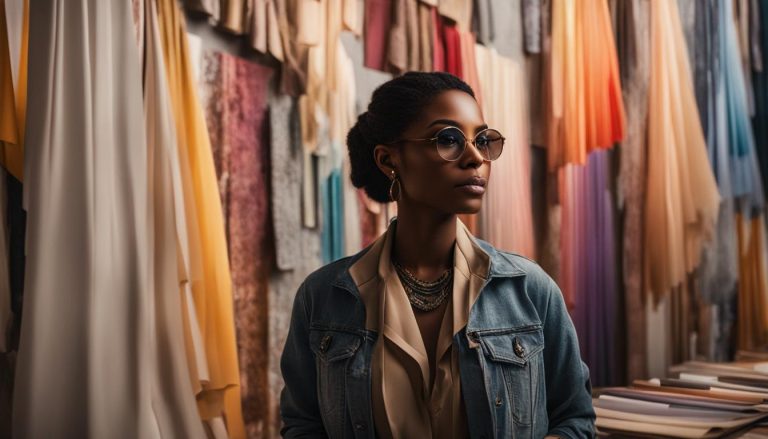
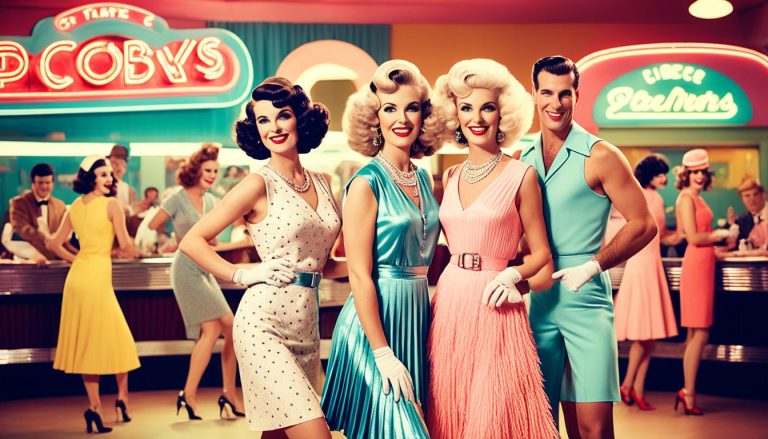

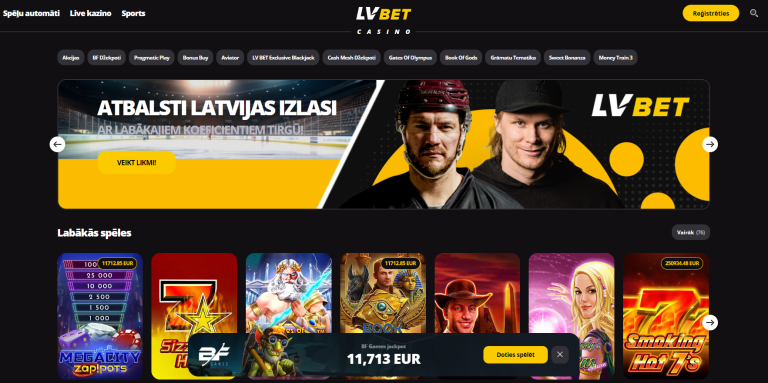
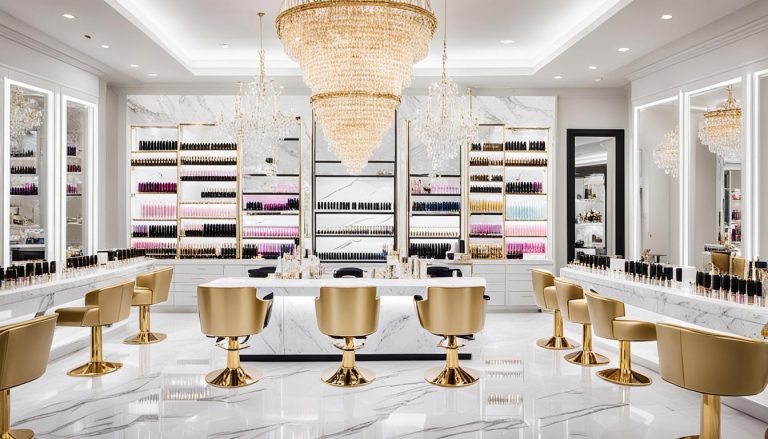
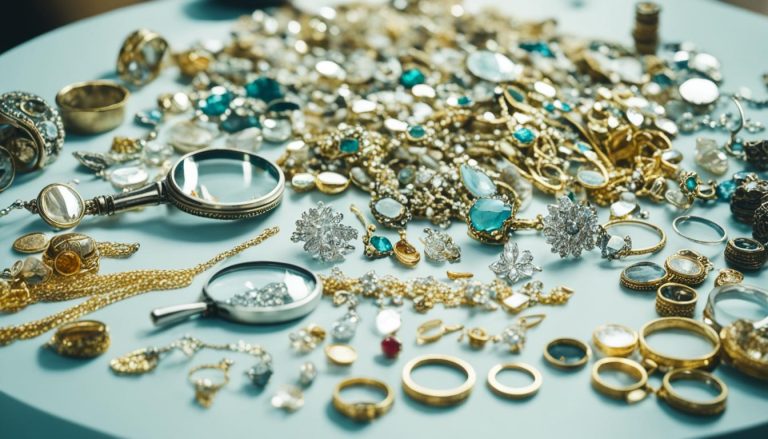


+ There are no comments
Add yours